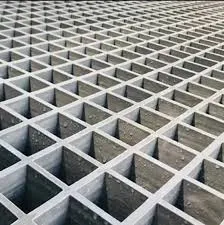
-
 Afrikaans
Afrikaans -
 Albanian
Albanian -
 Amharic
Amharic -
 Arabic
Arabic -
 Armenian
Armenian -
 Azerbaijani
Azerbaijani -
 Basque
Basque -
 Belarusian
Belarusian -
 Bengali
Bengali -
 Bosnian
Bosnian -
 Bulgarian
Bulgarian -
 Catalan
Catalan -
 Cebuano
Cebuano -
 China
China -
 China (Taiwan)
China (Taiwan) -
 Corsican
Corsican -
 Croatian
Croatian -
 Czech
Czech -
 Danish
Danish -
 Dutch
Dutch -
 English
English -
 Esperanto
Esperanto -
 Estonian
Estonian -
 Finnish
Finnish -
 French
French -
 Frisian
Frisian -
 Galician
Galician -
 Georgian
Georgian -
 German
German -
 Greek
Greek -
 Gujarati
Gujarati -
 Haitian Creole
Haitian Creole -
 hausa
hausa -
 hawaiian
hawaiian -
 Hebrew
Hebrew -
 Hindi
Hindi -
 Miao
Miao -
 Hungarian
Hungarian -
 Icelandic
Icelandic -
 igbo
igbo -
 Indonesian
Indonesian -
 irish
irish -
 Italian
Italian -
 Japanese
Japanese -
 Javanese
Javanese -
 Kannada
Kannada -
 kazakh
kazakh -
 Khmer
Khmer -
 Rwandese
Rwandese -
 Korean
Korean -
 Kurdish
Kurdish -
 Kyrgyz
Kyrgyz -
 Lao
Lao -
 Latin
Latin -
 Latvian
Latvian -
 Lithuanian
Lithuanian -
 Luxembourgish
Luxembourgish -
 Macedonian
Macedonian -
 Malgashi
Malgashi -
 Malay
Malay -
 Malayalam
Malayalam -
 Maltese
Maltese -
 Maori
Maori -
 Marathi
Marathi -
 Mongolian
Mongolian -
 Myanmar
Myanmar -
 Nepali
Nepali -
 Norwegian
Norwegian -
 Norwegian
Norwegian -
 Occitan
Occitan -
 Pashto
Pashto -
 Persian
Persian -
 Polish
Polish -
 Portuguese
Portuguese -
 Punjabi
Punjabi -
 Romanian
Romanian -
 Russian
Russian -
 Samoan
Samoan -
 Scottish Gaelic
Scottish Gaelic -
 Serbian
Serbian -
 Sesotho
Sesotho -
 Shona
Shona -
 Sindhi
Sindhi -
 Sinhala
Sinhala -
 Slovak
Slovak -
 Slovenian
Slovenian -
 Somali
Somali -
 Spanish
Spanish -
 Sundanese
Sundanese -
 Swahili
Swahili -
 Swedish
Swedish -
 Tagalog
Tagalog -
 Tajik
Tajik -
 Tamil
Tamil -
 Tatar
Tatar -
 Telugu
Telugu -
 Thai
Thai -
 Turkish
Turkish -
 Turkmen
Turkmen -
 Ukrainian
Ukrainian -
 Urdu
Urdu -
 Uighur
Uighur -
 Uzbek
Uzbek -
 Vietnamese
Vietnamese -
 Welsh
Welsh -
 Bantu
Bantu -
 Yiddish
Yiddish -
 Yoruba
Yoruba -
 Zulu
Zulu
frp sand pipe
Understanding FRP Sand Pipes A Comprehensive Overview
Fiber Reinforced Polymer (FRP) sand pipes are increasingly becoming a popular choice in various industrial applications due to their unique properties and advantages over traditional materials. This article aims to delve into the specifics of FRP sand pipes, exploring their composition, benefits, applications, and maintenance considerations.
What Are FRP Sand Pipes?
FRP is a composite material made of a polymer matrix reinforced with fibers, typically glass or carbon. The utilization of FRP in sand pipes significantly enhances their mechanical properties, making them suitable for transporting abrasive materials like sand. These pipes are designed specifically to be lightweight, corrosion-resistant, and durable, ensuring efficient performance in challenging environments.
Benefits of FRP Sand Pipes
One of the standout features of FRP sand pipes is their exceptional resistance to corrosion. Unlike traditional steel or concrete pipes, FRP does not rust or deteriorate when exposed to aggressive chemicals or saline environments. This characteristic extends the lifespan of the pipes, reducing the need for frequent replacements and maintenance.
Moreover, FRP sand pipes are incredibly lightweight compared to their metal counterparts. This not only simplifies transportation and installation but also reduces the overall load on supporting structures, making them ideal for applications in areas with weight restrictions.
Another significant advantage is the customization potential of FRP pipes. Manufacturers can tailor the materials and design to meet specific project needs, allowing for better performance characteristics depending on the environment and the type of sand being transported.
frp sand pipe

Applications of FRP Sand Pipes
FRP sand pipes find applications in numerous industries, including mining, construction, and oil extraction. In mining, they are often employed in the transportation of sand from extraction sites to processing facilities. Their ability to withstand abrasive materials ensures efficient transfer without significant wear, which can be a critical concern with traditional piping methods.
In the construction industry, FRP sand pipes are used for drainage systems and in situations where soils contain a high sand content. Their lightweight nature also facilitates the installation of subterranean systems, providing both cost-effectiveness and efficiency throughout the project lifecycle.
Moreover, in the oil and gas sector, these pipes can be used to transport sand produced during extraction processes. The resistance to corrosion allows them to function effectively in harsh environments where other materials would fail.
Maintenance Considerations
While FRP sand pipes are designed for durability, regular inspection and maintenance are still crucial. Awareness of the operational environment and the types of materials being conveyed can help identify any potential issues before they become significant problems. Cleaning the pipes regularly can also prevent blockages, ensuring a steady flow of materials.
In conclusion, FRP sand pipes represent a modern solution to the challenges faced in transporting abrasive materials. Their combination of lightweight properties, corrosion resistance, and potential for customization makes them an attractive choice across various industries. By understanding how these pipes function and their applications, businesses can make informed decisions that contribute to efficient and sustainable operations. As technology advances, one can anticipate further innovations in FRP composites that will expand capabilities and enhance performance in the years to come.
Latest news
-
Exploring the Benefits of Top Hammer Drifter Rods for Enhanced Drilling PerformanceNewsJun.10,2025
-
High-Precision Fiberglass Winding Machine for GRP/FRP Pipe Production – Reliable & Efficient SolutionsNewsJun.10,2025
-
FRP Pipes & Fittings for Shipbuilding - Corrosion-Resistant & LightweightNewsJun.09,2025
-
Premium FRP Flooring Solutions Durable & Slip-ResistantNewsJun.09,2025
-
Premium Fiberglass Rectangular Tanks Durable & Lightweight SolutionNewsJun.09,2025
-
Tapered Drill String Design Guide Durable Performance & UsesNewsJun.09,2025









